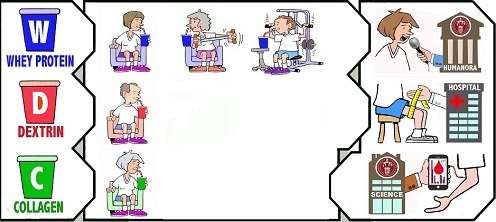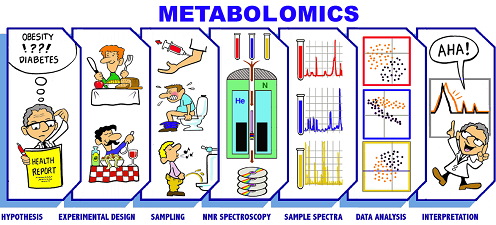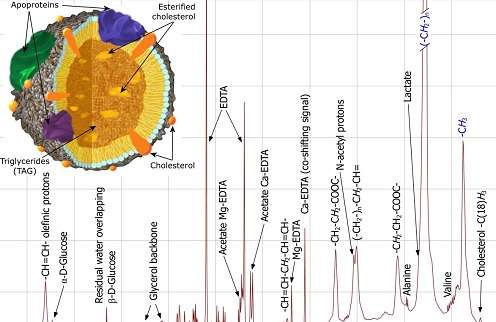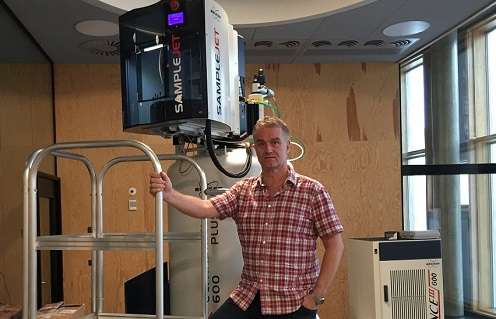Food scientists hunting for biological "blood trail" left by muscles

By the age of 50, people begin to lose muscle mass (a process called sarcopenia), which increases our risk for diseases, resulting in reduced quality of life and costing society dearly. By screening all older people for degrees of sarcopenia, it will be possible to take preventative measures that could delay the condition and may prevent it from becoming debilitating. That is why researchers at the Department of Food Science (FOOD) at the University of Copenhagen are looking for a new biomarker that can detect the risk a person has for developing sarcopenia quickly and cheaply.
It is the researchers' hope that the risk of developing age-related loss of muscle mass in the future can be predicted by taking a blood sample and making a lipoprotein profile. Today, sarcopenia is diagnosed by taking a so-called DXA scan of the thigh and testing the physical strength of the elderly.
"Our specific task is to find a new biomarker for sarcopenia that is faster and cheaper than the method we already have. If we succeed, it will be possible to screen all older people for the tendency to lose muscle mass and offer suggestions for a corrective diet and physical activity. Today, sarcopenia is a major burden for the elderly and for the national economy," says Professor at the Department of Food Science (FOOD), University of Copenhagen, Soren Balling Engelsen who is head of the section Chemometrics and Analytical Technology.
It takes up to a week to check the blood sample using ultracentrifugation, whereas researchers can map the lipoprotein profile by using NMR in less than 20 minutes.
The lipoprotein profile reveals the distribution of fat particles in the blood, including the "good" cholesterol and "bad" cholesterol. The latter is typically measured with clinical kits, which is a quick, but not comprehensive method, as it does not include lipoprotein subtypes.

"With NMR measurement, the two main types are revealed, but also the lipoprotein subtypes, which can be seen as a biomarker pattern – a so-called biocontour. For example, a biomarker for obesity has already been found via the subtypes, which strengthens our belief that we can find a biomarker for sarcopenia," says Soren Balling Engelsen.
245 older people to undergo a thorough health assessment
The blood samples to be tested, and the lipoprotein profiles that come out of it, come from 245 people over the age of 65 who, over the course of a year, will supplement their diet with whey protein and will follow three different programmes: no training, easy home-based workouts and intensive supervised training. The research is part of two projects, CALM and COUNTERSTRIKE, which are also studying whether protein supplements and/or daily physical exercise can prevent or delay sarcopenia.
The elderly have been health assessed at Bispebjerg Hospital, where they have measured a number of medical and physiological parameters, which together give a good picture of each individual's state of health and physical performance. And it is this health description that researchers from FOOD are now trying to retrieve through the elderly lipoprotein profiles.

Health also described by bacteria from the intestinal flora
The participants' health will be measured both before and after the "lifestyle changes," and the researchers are now in the process of creating a so-called baseline study, which is based on the health assessments the participants underwent before they started with the lifestyle changes. This study will later be compared with the results after the lifestyle changes.
The participants' health has similarly been measured through the distribution of bacteria in their intestinal flora (microbiome). A person typically has 1 kg of bacteria in their intestinal system and the composition of the bacteria is at least as important for the metabolism of the diet as our internal organs. The characterisation of the bacteria in the intestinal flora of the participants is headed by Associate Professor Dennis Sandris Nielsen from the FOOD section Microbiology and Fermentation.
In the blood, you can find not only metabolites originating from the cells and internal organs, but also metabolites originating from the breakdown of the diet, as well as metabolites produced by the breakdown of food by the bacteria in the intestine. The researchers hope that the blood's metabolome can be verified and complemented with the results from the intestinal microbiota and from the baseline study they can already confirm to some degree an Irish research result that shows that there is a fairly close connection between the composition of the intestinal flora and e.g. physical strength.
"But we are not yet finished with the characterisation and need to focus our studies more toward the classic measures for sarcopenia like DXA scanning (scanning of thigh muscle and bone, ed.) and a number of physical parameters that look at, for example, how many times the participants can sit up and sit down within a fixed period, how strong their grip is and more," says Soren Balling Engelsen.

The size of the lipoproteins as a marker of health
It is known that the size and density of the lipoproteins are crucial to how well the metabolism of fat and energy takes place in the body and whether the fatty deposits build up in the arteries (calcify).
It is also the size of the lipoproteins that cause the fat signals to move with the NMR measurement – the fluctuations, can then be compared with a model of the lipoprotein profile as it looks when you are "healthy." The NMR measurements of the blood are interpreted using multivariate data processing (chemometrics) and the result is visualised as a lipoprotein profile (see illustration). Until the NMR method is thoroughly validated the results are compared with the results you get by mapping the lipoprotein profile using ultracentrifugation of the blood samples, which is the well-established clinical method.
"Differences in the lipoprotein profile can potentially be defined as a biomarker – and we are therefore looking for deviations in the profile that might, together with other information, show whether a person is headed for sarcopenia. A biomarker does not have to be a single substance (for example, cholesterol, blood sugar or another blood metabolite), but will much more likely be a pattern in the lipoprotein profile – also called a biocontour," says Soren Balling Engelsen.

A holistic research approach
"It is difficult stuff – not least because CALM and COUNTERSTRIKE are interdisciplinary research projects – so as technologists we are working with humanists towards shared goals and we need to clarify the results with each other in order to move forward. It is this interdisciplinary approach that makes these projects the most interesting I have ever been involved in," says Soren Balling Engelsen.
It is not only about finding a method that can show whether a person is beginning to develop sarcopenia. Or whether you are able to take preventative measures in the form of protein supplements, dietary changes and physical activity.
"We must also be able to communicate our knowledge to the elderly in a way so that they will want to change habits and know why and how it benefits them, and topics like 'the good old age' and 'the good death' are discussed in these projects and the results are certainly not obvious," says Soren Balling Engelsen.
Besides reflecting older people's health through metabolome and microbiomes and comparing the results with the health assessments from Bispebjerg Hospital, other aspects are being studied at FOOD. The protein supplement that participants are drinking is for example being tested for taste and acceptability in the FOOD section Design and Consumer Behavior. This research is led by Associate Professor Armando Perez-Cueto.















